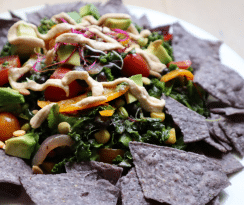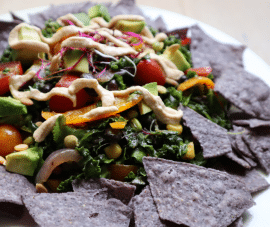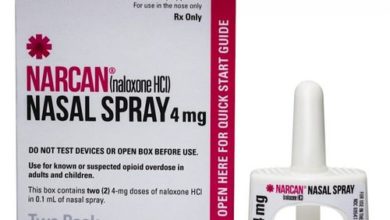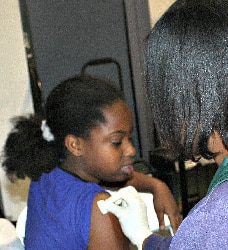National Wellness Month: How to Eat Healthy on a Budget


[SOUTH FLORIDA] – All during August, National Wellness Month focuses on self-care, managing stress and promoting healthy routines. Create wholesome habits in your lifestyle all month long and see how much better you feel!
We know that self-care helps manage stress and promotes happiness. Whether you challenge yourself to a new yoga pose or try a different spa treatment, make a small change and impact your health in positive ways.
There are numerous ways to make those small changes, too. Nzingah Oniwosan, who is a Haitian-American wellness, holistic coach and award-winning visual artist, classically trained pianist. Her creativity is expressed through custom-made jewelry, writing, and dance. She has merged her art with healing holistically.
Sankofa’s Child

(Photographer Joyanne Payton)
In 2005, she founded Sankofa’s Child. The focus is to use the arts to engage, build, inspire, and heal individuals, families, and communities. Her commitment has allowed her to work directly with well over 100,000 children and adults nationally and internationally. Her work’s impact has led to her being asked to speak and lead professional development workshops at national and international conferences.
365zing App
After lessons learned from her 19-year journey to heal and thrive after being diagnosed with a brain tumor, autoimmune disorder, and polycystic ovary syndrome, 365zing, a self-care companion app, was born.
365Zing centralizes features found separately on individual apps in one place to help black women get on track with their health goals physically, mentally, and spiritually. Her work is culturally sensitive, coming through her lens as a Black woman, the daughter of immigrants, and her own healing experience. She notes that “When it comes to wellness, nothing is one-size-fits-all,” and as such, she helps each client make a personal holistic toolkit along with goal setting, including self-care.
Nzingah is a holistic health consultant who knows the effects of a good diet on personal health and wellness after seeing the results in her own life. Here are the 13 tips she shared with us.
13 Tips How to Eat Healthy on a Budget

When I engage in conversations around healthy eating, the cost invariably comes up. There is usually a recollection of a trip to Whole Foods that goes like this, “I got to the register with a basket…NOT!!!…a cart, and the cashier said $75. I did a mental count of what I had, and there were ONLY 10 items in my basket. It doesn’t make sense.” I usually laugh and tell them that it is beginner’s blues at Whole Foods.
Honestly, eating healthy is not as expensive as we think. For example, in 2013, Harvard published a study in the British Medical Journal that showed that the healthiest diet only costs $1.50 more a day than the unhealthiest. So, for a year, $1.50/day more for eating a healthy diet would increase food costs for one person by about $550 per year. When I read the amount, I thought that difference was nothing, however for families living on a tight budget or the poverty line, that can be significant. But, when you think about the cost of diet-related chronic disease, $1.50 is nothing.
I had an opportunity to speak at Purse Empowerment’s Summer Savings Brunch a few years ago. The topic was “How to Buy Healthy and Organic Foods on Budget.” So I thought it would be great to create a blog post to share some of the tips I use and share with my clients. So here are 12 tips to help you stay on track with your Healthy Eating goals.
- Everything Does Not Have to Be Organic: So let me start with this if you can buy everything organic, please do. Past studies have shown that organic fruits and vegetables have 20-40% higher amounts of antioxidants. Why should we care about antioxidants? Antioxidants protect cells from aging and damage that leads to cells becoming cancerous. Also, we still have yet to understand how pesticides, hormones, and antibiotics are impacting our systems. Some suggest that the overuse of antibiotics in animals has caused the loss of effectiveness of these drugs in human medicine. Can we say SUPERBUG? Let’s not go into the possible implications of the use of hormones and pesticides. Now for those of us who cannot afford it at this time or can find everything you want organic. You can get away with buying some conventional food. Thanks to the Environmental Workers Group (EWG), we have the Clean Fifteen and the Dirty Dozen. Every year, EWG puts out a list of 15 pretty clean foods when it comes to pesticides and 12 pretty dirty foods, hence the name the dirty dozen. If you can not purchase everything organic, make sure you buy the fruits and vegetables listed on the dirty dozen organic.
- Purchase Fresh Local Produce: When fruit is in season, it is in great abundance. This means the grocery stores or farmers want to get rid of it as quickly as possible not to spoil it. As buyers, that means excellent prices…five oranges for one dollar, a mango for under a dollar, you get my drift. When foods are not in season and are being brought in from different countries, we are paying more because of the shipping cost and the risk of it spoiling before it hits the stands. Find out what is in season and purchase those fruits and vegetables as much as possible.
- Grow Your Food: Growing your food can be a great way to save after the initial investment of seeds or plants.
- Have a Meal Plan and Shopping List: I am guilty of going to the grocery store with no game plan and leaving with things that make me happy (can we say vegan chocolate chip cookies) but falling short when it comes to the meals for the week. The best way to combat this is the create a meal plan or find one online. Then create a shopping list based on what you plan to make that week. When you go in with a plan, you will leave the store with what you need and want. This means your food will not spoil in the fridge because you bought it on a whim.
- Make Your Own Food aka COOK: Although convenient, eating out can add up. If we took those same dollars we used to purchase a meal at a restaurant and used it to buy the ingredients instead, you would get twice, if not four times, the amount of food. I always use kale chips as an example. The average bag costs about $5, and you are getting maybe 3oz if you are lucky. You can use that same five bucks to make 10x the amount of kale chips. By preparing your food weekly, you could save upwards of $50/week, which is $200 for the month. Don’t forget to pack your lunch.
- Buy In Bulk or Wholesale: It is great to stack up on your staples like grains and legumes. Go to your local Costco or Sam’s and see how much to save. You can get items like agave as well at a great price.
- Buy fruits and vegetables in season: Due to the abundance of what is in season, the prices are typically lower than when it is not in season. Catch the sale and if you have excess, freeze it so you can use it in the future.
- Buy Frozen Fruits and Vegetables: Frozen fruits and vegetables are a great way to save a few books. Typically the fruits and vegetables are frozen at their peak, making them very nutritious. You can use them for your smoothies, stews, and soups. It also allows you to have access to fruits and vegetables when they are not in season.
- Grab generic brands: Same thing lower price! Most supermarkets have their line of products that are comparable to major brands. The most significant difference, of course, is the price. I do suggest reading the ingredients to make sure it is still quality food.
- Stock up on Sales: So I have to be honest and say that healthier products are not on sale as frequently. Keep in mind you want to buy the things you will use and not just purchasing an item or two that you may never use.
- Use Coupons: I know most of the coupons are for junk food, but you will be amazed at what you can find if you dig a little deeper. As an Amazon Prime member, I receive special deals on whole foods in addition to getting an extra 10% on all sales items. I currently use an app called IBOTTA, and I have saved a lot of money on items I usually purchase. Use this link to join, and you automatically will get $3.
- Buy dried goods: I love to purchase my legumes dried. One bag of dried beans can make 3 to 4 cans that you would have bought. Also, the cans leach aluminum into your food and add to your heavy metal load.
- Don’t shop hungry: You know what happens when all the above goes out the door. Make sure you go shopping satisfied and not Hangry.
Get Social
Click here for Nzingah’s podcast on healthy eating tips to reclaim your kitchen. Check it out! Let me know what ways you eat healthy on a budget.
For more information visit:https://www.yesbabyilikeitraw.com/ and follow on social media: IG: @yesbabyilikeitraw





